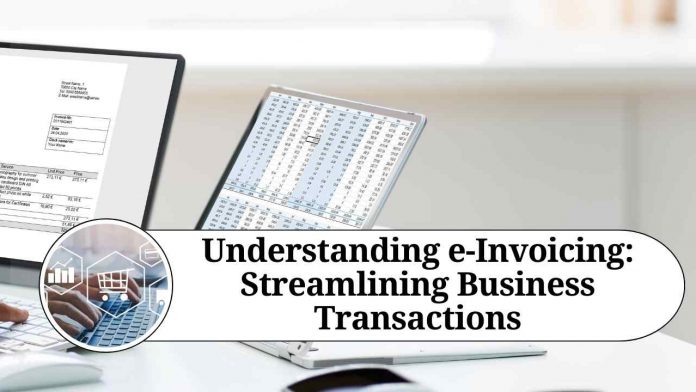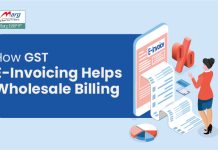Introduction
In today’s fast-paced digital age, businesses are continually seeking efficient ways to enhance their operational processes. One area that has witnessed significant advancements is invoicing. Traditional paper-based invoices are gradually being replaced by electronic invoicing or e-Invoicing, which offers numerous benefits such as improved accuracy, reduced costs, and streamlined business transactions. In this blog, we will delve into the concept of e-Invoicing, exploring its definition, advantages, and implementation.
What is e-Invoicing?
e-Invoicing, short for electronic invoicing, refers to the automated exchange of invoices between suppliers and buyers in a digital format. It eliminates the need for physical documents by electronically transmitting invoice data from the sender’s system to the recipient’s system. The format of e-Invoices may vary, but they usually conform to standardized structures, ensuring consistency and compatibility across different systems.
Advantages of e-Invoicing
- Enhanced Efficiency: e-Invoicing accelerates the invoicing process by eliminating manual tasks such as printing, mailing, and data entry. It allows businesses to generate and send invoices instantly, reducing processing time and enabling quicker payments.
- Cost Savings: By eliminating paper, printing, and postage costs, e-Invoicing significantly reduces operational expenses. Additionally, it minimizes the risk of errors, eliminating the need for manual corrections and associated costs.
- Improved Accuracy: e-Invoicing reduces the likelihood of errors that commonly occur in manual processes. Automated data entry and validation mechanisms help ensure accurate and consistent invoice information, leading to fewer discrepancies and disputes.
- Faster Payments: With e-Invoicing, businesses can receive payments more promptly. By reducing the time spent on invoice processing and approval, companies can improve their cash flow and optimize working capital.
- Enhanced Visibility and Control: e-Invoicing provides real-time visibility into the invoicing process. Businesses can track the status of their invoices, identify bottlenecks, and take proactive measures to resolve issues promptly. This increased control leads to improved efficiency and customer satisfaction.
Implementing e-Invoicing
To implement e-Invoicing effectively, businesses need to consider the following steps:
- Establish Internal Readiness: Assess your organization’s readiness to adopt e-Invoicing by evaluating existing systems, processes, and resources. Ensure your internal systems are capable of generating and managing electronic invoices.
- Choose a Service Provider: Select a reliable e-Invoicing service provider that meets your business requirements. Consider factors such as security, compatibility with your existing systems, customer support, and scalability.
- Data Integration: Integrate your billing or ERP system with the e-Invoicing solution to enable seamless data transfer and minimize manual intervention. Ensure the e-Invoicing solution aligns with relevant standards and formats, such as XML or UBL.
- Compliance and Legal Requirements: Understand the legal and regulatory framework governing e-Invoicing in your country or region. Ensure your e-Invoicing practices comply with applicable tax laws and regulations, such as digital signatures and archiving requirements.
- Collaborate with Trading Partners: Encourage your suppliers and customers to adopt e-Invoicing to maximize the benefits. Collaborate with them to establish common standards and processes, facilitating smooth and efficient transactions.
Conclusion
e-Invoicing revolutionizes the way businesses handle their invoicing processes, providing a range of benefits such as increased efficiency, cost savings, and improved accuracy. By embracing electronic invoicing, companies can streamline their operations, reduce manual errors, and enhance their financial management. As businesses continue to adopt digital transformation practices, e-Invoicing is becoming an essential component of modern-day commerce, paving the way for a more efficient and interconnected business ecosystem.
Read more useful content:
Frequently Asked Questions (FAQs)
Q. What is e-Invoicing?
e-Invoicing, or electronic invoicing, refers to the process of electronically creating, sending, receiving, and managing invoices between businesses or organizations. It replaces traditional paper-based invoicing with digital formats to streamline and automate the invoicing process.
Q. How does e-Invoicing work?
e-Invoicing involves the generation of invoices in a digital format, such as XML or PDF, using dedicated software or systems. These invoices are then electronically transmitted to the recipient’s system, either directly or through intermediaries like e-Invoicing service providers. The recipient’s system can process the invoice data, enabling automation of invoice verification, payment, and record-keeping.
Q. What are the benefits of e-Invoicing?
e-Invoicing offers several advantages, including increased efficiency, cost savings, improved accuracy, faster payment cycles, enhanced visibility and control over invoicing processes, reduced environmental impact, and easier compliance with tax regulations.
Q. Is e-Invoicing secure?
Yes, e-Invoicing employs various security measures to ensure the confidentiality, integrity, and authenticity of invoice data. Encryption techniques, digital signatures, secure data transmission protocols, and access controls are commonly used to protect sensitive information during the invoicing process.
Q. Do I need special software or systems to implement e-Invoicing?
Yes, implementing e-Invoicing typically requires dedicated software or systems that support electronic invoice generation, transmission, and management. These can be standalone e-Invoicing solutions or integrated modules within existing billing or enterprise resource planning (ERP) systems.
Q. Are there any legal requirements or standards for e-Invoicing?
The legal requirements and standards for e-Invoicing vary across countries and jurisdictions. It is essential to understand the specific regulations applicable in your region, such as electronic signature requirements, data format standards, archiving obligations, and tax compliance rules.
Q. Can e-Invoicing be integrated with my existing systems?
Yes, e-Invoicing solutions can typically be integrated with existing billing or ERP systems. Integration allows for seamless data exchange between systems, minimizing manual intervention and streamlining the invoicing process.
Q. How can I encourage my suppliers or customers to adopt e-Invoicing?
To encourage adoption, you can educate your trading partners about the benefits of e-Invoicing, such as improved efficiency, cost savings, and faster payment cycles. Highlight the ease of implementation, compatibility with their systems, and potential for mutual benefits. You can also collaborate with industry associations or government initiatives that promote e-Invoicing adoption.
Q. Can e-Invoicing be used for international transactions?
Yes, e-Invoicing can be used for international transactions. However, it’s crucial to ensure compliance with local regulations and consider factors like different tax systems, currency conversions, and cross-border data transfer requirements.
Q. Is e-Invoicing suitable for businesses of all sizes?
Yes, e-Invoicing can benefit businesses of all sizes, from small startups to large enterprises. The advantages of e-Invoicing, such as improved efficiency and cost savings, are relevant regardless of the company’s scale. However, the specific implementation approach and systems used may vary depending on the organization’s size and complexity.




















